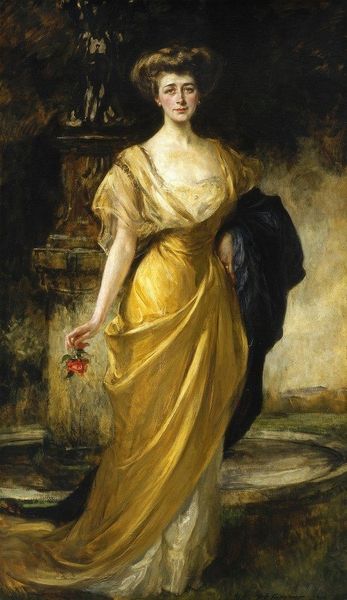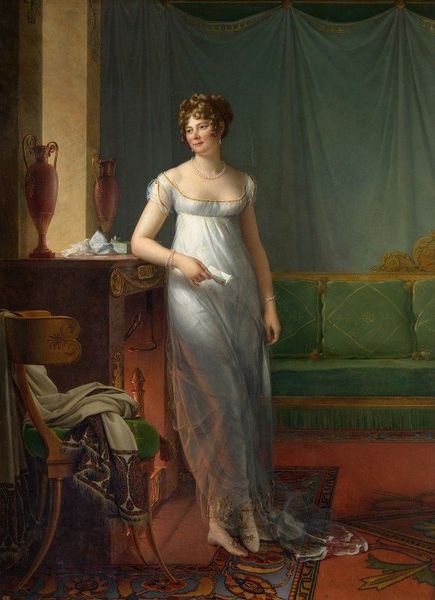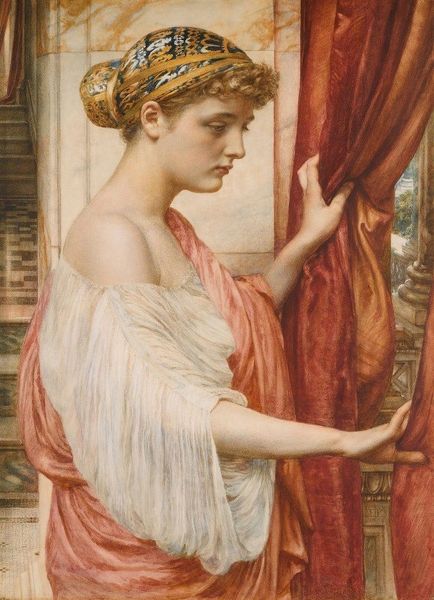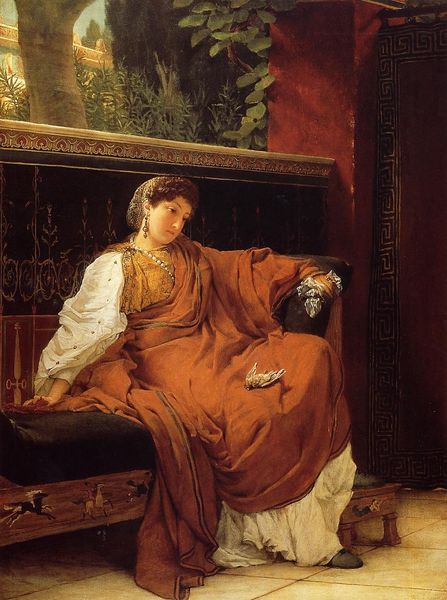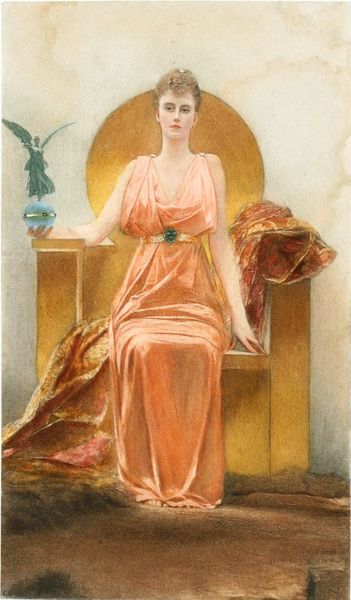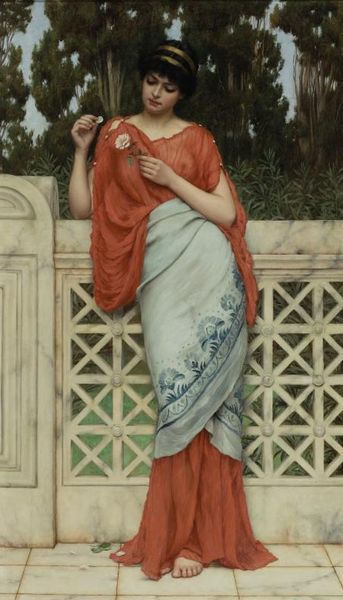
painting, oil-paint
#
portrait
#
figurative
#
painting
#
oil-paint
#
oil painting
#
romanticism
#
genre-painting
#
history-painting
#
academic-art
#
portrait art
Copyright: Public Domain: Artvee
Editor: So, this is *La Fileuse*, an oil painting by John William Waterhouse. It depicts a woman spinning thread. It's quite striking, with a somewhat melancholic feel. What do you see in this piece? Curator: This painting resonates deeply when viewed through a feminist lens. Waterhouse, often celebrated for his Pre-Raphaelite portrayals of women, presents here what appears to be a simple domestic scene. But consider: What does it mean to represent a woman solely through the labor she performs? Editor: That’s a perspective I hadn't considered. I was more focused on the classical references. Curator: Precisely! The classical setting—the architecture, her clothing—idealizes the subject. However, this idealization can also be read as a confinement. Is Waterhouse celebrating the woman's skill or trapping her within a historical expectation of female domesticity? Who does this image serve and what are it's biases? Editor: That reframes the entire painting! I initially saw it as beautiful, but your interpretation reveals a tension between the aesthetic appeal and its historical implications. Curator: The composition directs our gaze, framing her existence by gendered labor. It’s a portrait of quiet endurance. A deeper conversation might be; in representing "La Fileuse" has the artist stripped her agency through visual constraints, essentially weaving another layer of control around her. Is that what the art conveys for you, or not? Editor: That's such a compelling argument. I see now that the painting opens up questions about female representation and the constraints placed on women throughout history. Curator: Exactly. By understanding the socio-political context of its creation, the piece transcends being just a pretty picture. It prompts us to critically examine the narratives we inherit and perpetuate through art. Editor: Thank you. I definitely learned how crucial it is to consider these sorts of sociocultural factors!
Comments
No comments
Be the first to comment and join the conversation on the ultimate creative platform.
